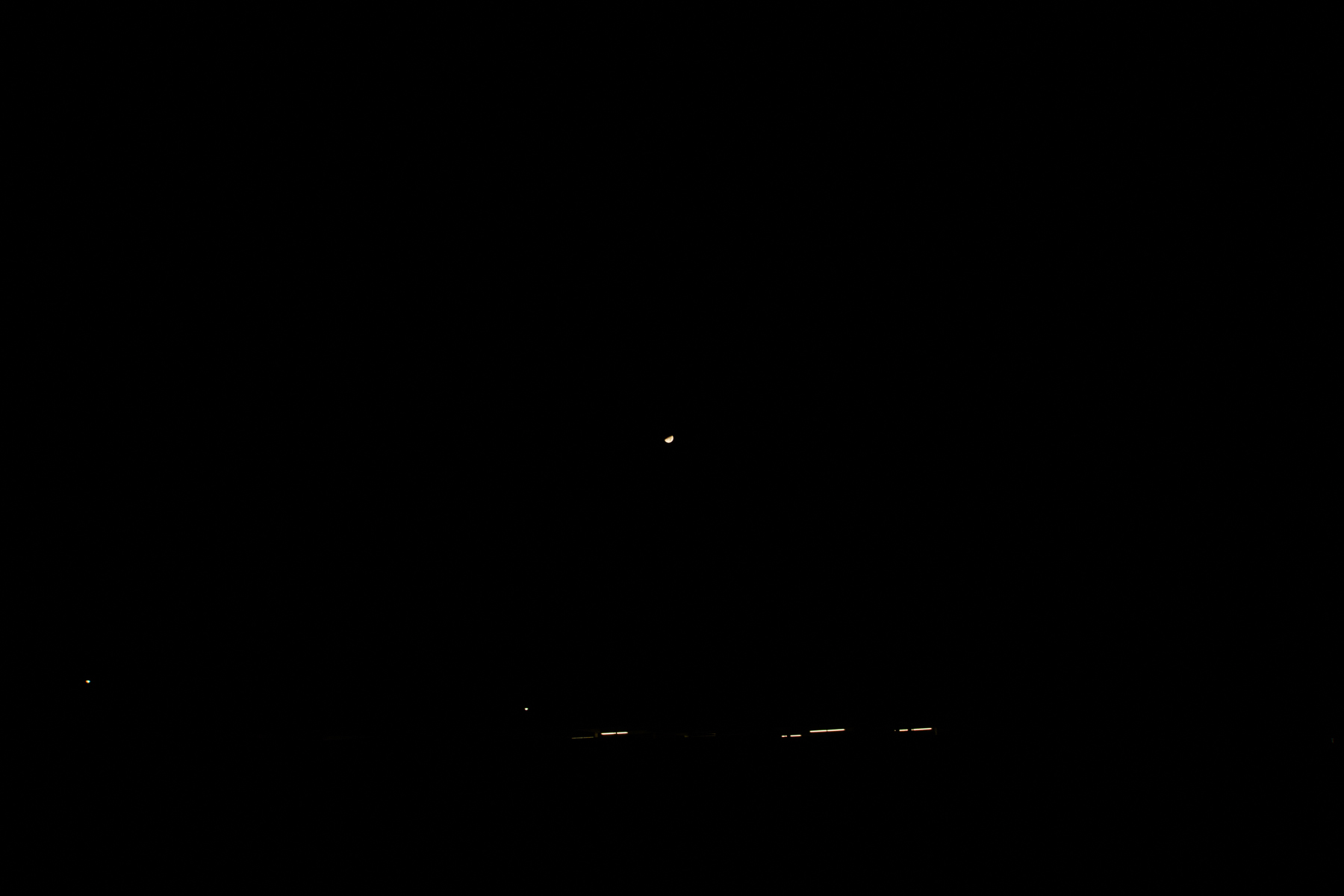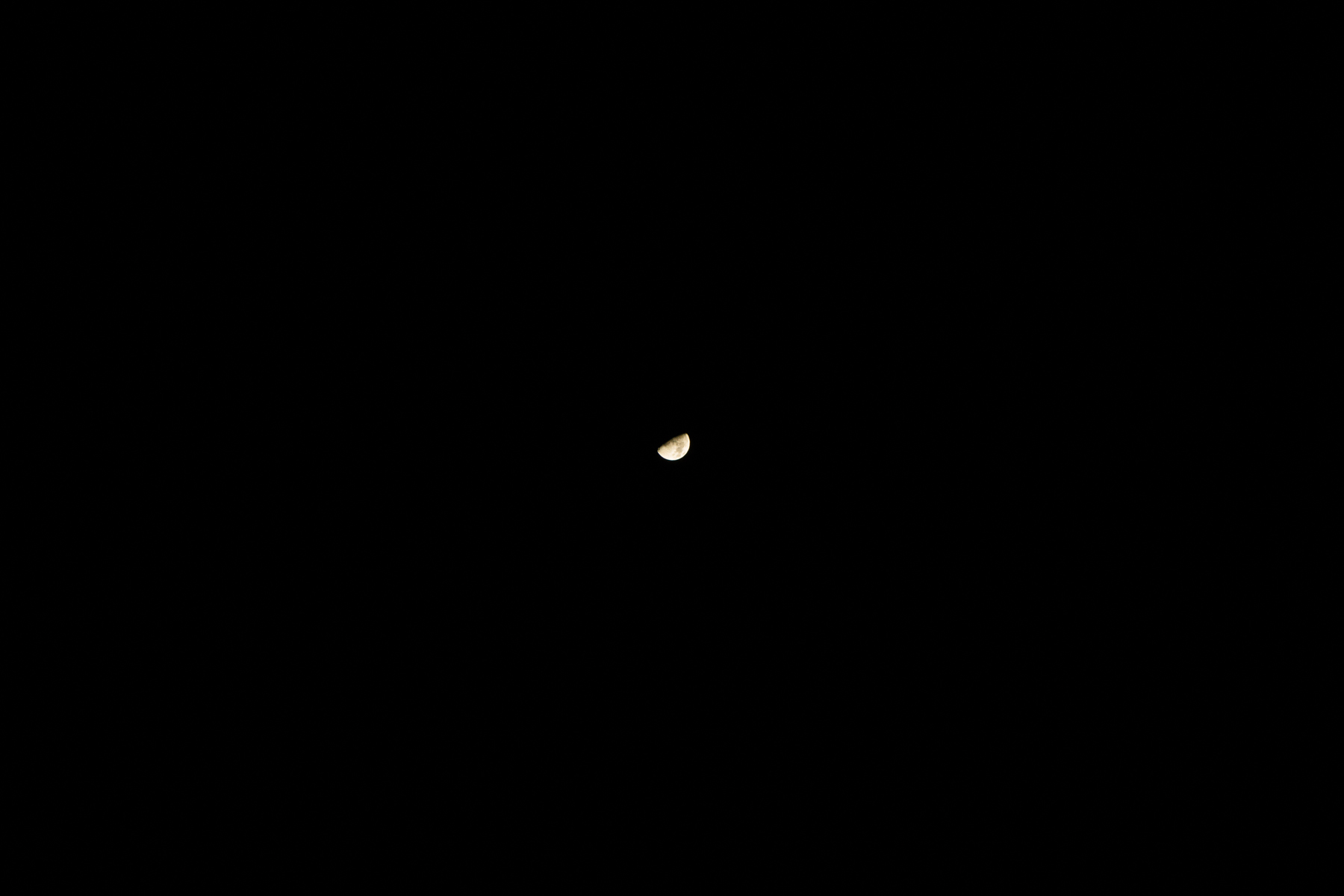Good Evening,
We haven't really talked about primary equipment. It probably should have been done before filters. Let's start with lenses. The camera lens focuses light onto the sensor through an assortment of different shaped lenses inside of it. The eye changes focus by changing the shape of the lens with small muscles and this is how we have such a wide range of focus, from around 6 inches in front of our eyes to infinity. Glass lenses can't, at this time, change shape like that so they change the distance between the pieces of glass for a similar effect. The aperture takes the place of the pupil, opening and closing to let more or less light in as the situation demands. The aperture affects the image as well with things such as bokeh and starbursts.
There are many types of lenses which can be broken down pretty far. I am trying something new with the blog, carousels. Click on the pictures to cycle though the images.
Below is the same shot of the moon at 11mm, 18mm, and 35mm.
Wide angle - used for landscapes, cityscapes, and interiors (this would also include ultra wide lenses). Depending on the person this is anything less than 35mm in crop sensor and 50mm in full frame there is wiggle room in those numbers though. There is a wide angle of view on these lenses, not as wide as the human eye though which is about 180 degrees if you have both eyes functioning. For example an 11mm lens on a crop sensor has 104 degree angle of view, a 35mm has 42 degree, and a 50mm has 32 degree.
Below is the moon at 50mm and 70mm.
Normal angle - used for portraits, general shooting. This focal length is more or less how the eye sees the world. If we open both eyes while looking though the view finder each eye will see everything about the same size. For full frame I always heard 50mm and I have heard the same for crop sensors too which doesn't make sense. I just picked up a full frame (FF) and crop sensor (crop) camera and found it to be around 50mm for the crop and 70mm or so for the FF. More or less anything between wide and telephoto.
Below is at 100mm and 300mm which is about a typical or so range for a telephoto zoom.
Telephoto lens - used for sports, wildlife, celestial events, aviation. This type of lens brings everything in close. On the lower focal end they have use in portrait photography and macro photography. The price that we pay to get far away object closer is we loose wide angle of view. As an example a 75-300mm lens has field of view range of 21 - 5 degrees on a crop. If we want a close up of a bird or the moon then we don't need those extra degrees though.
Then there are zooms and fixed. Fixed lenses can often have wider aperture, can cost less, and can be sharper. We have to have many of them though or decide to "zoom" with our feet. Zoom lenses cover many focal lengths, the downside is that they are usually more expensive, they might have apertures that aren't as wide, and less expensive ones might not be as sharp. We come to a point where we make a decision of one over the other and deal with the downsides. I have both zooms and fixed and take which ones I need on each outing that I feel will be suit me. Now lenses don't only have to fit into these boxes. A telephoto lens can be used for landscapes and a wide angle can be used for sports and celestial events. Be creative and see what works for each situation.
I feel that lenses are worth more of an investment than the camera. I have multiple lenses that are still functioning fine that were discontinued in the mid 80s. It was all film back then. If a lens is taken care of it will last longer than the camera it came with. We can get into specialty lenses at a later date. Now go out and shoot.






